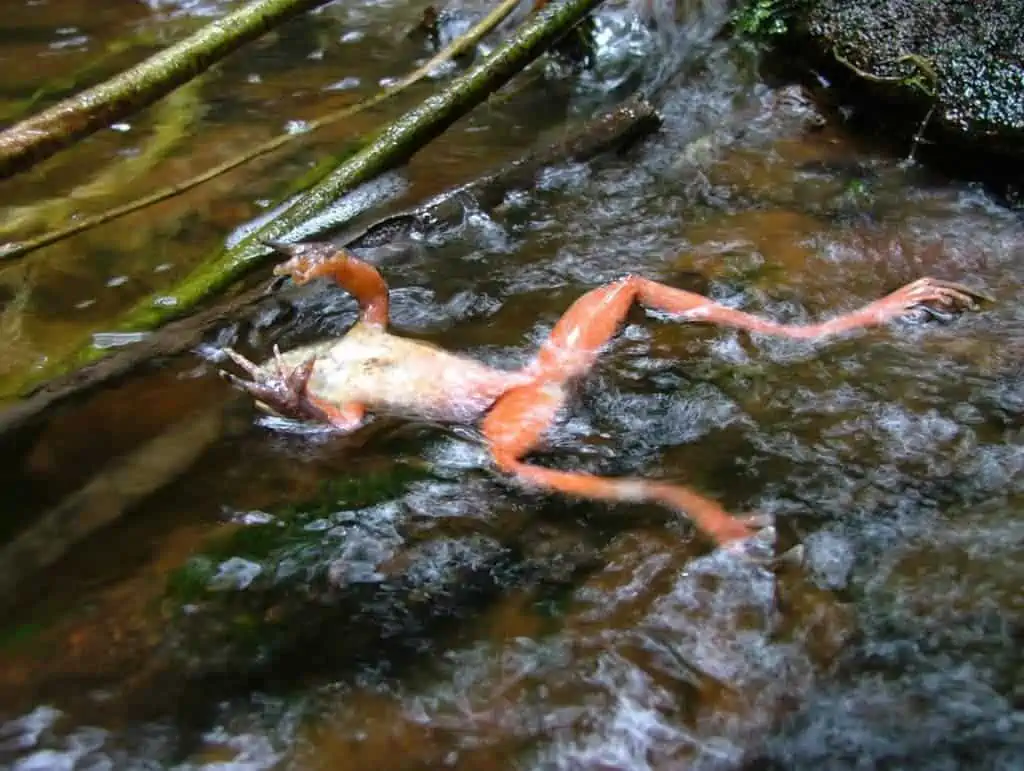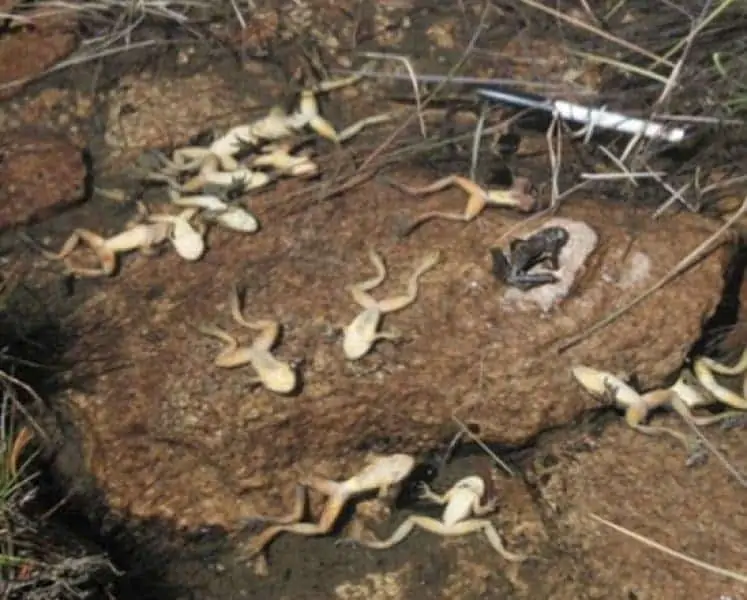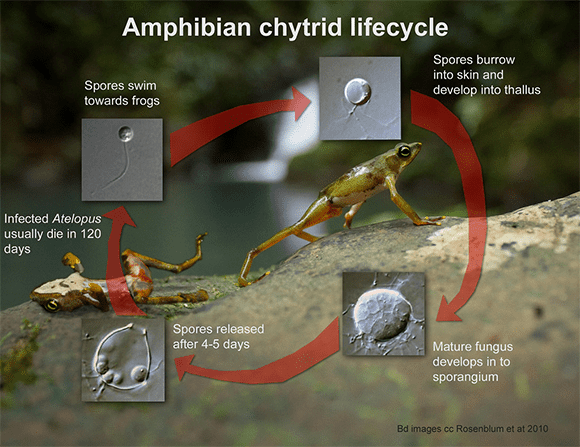
A fungus that gruesomely kills frogs and other amphibians is responsible for the biggest decline in wildlife in recorded history. In the past 50 years since the first outbreaks were signaled by biologists, the disease, known as chytridiomycosis, has been linked to massive declines in populations (over 90%) and extinctions of hundreds of amphibian species.
Frogs don’t just wear their skin, they drink and breathe through it. Their skin is composed of thin membranous tissue that is quite permeable to water and contains a large network of blood vessels that diffuse oxygen in and carbon dioxide out, even when the frogs are hibernating or underwater.
Chytridiomycosis is caused by a fungus called Batrachochytrium dendrobatidis — or Bd for short. The fungus primarily infects the skin of amphibians, disrupting essential functions such as the uptake of ions and respiration. Effectively, the fungus suffocates frogs.
Bd is exceptionally contagious being waterborne, and it can infect at least 1,000 distantly related amphibian species, affecting salamanders and newts, but especially frogs and toads. There is no vaccine or cure.
The Last of Us for frogs

According to a 2019 study compiled by researchers at the Australian National University, the fungus is responsible for the decline of 501 species of frogs and other amphibians — that’s 6.5% of all known amphibians. Due in large part to this fungal disease, 41% of amphibians are currently threatened with extinction. Australia, Central America, and South America are particularly hard hit, but Africa has been remarkably resilient. However, a new study suggests that not even this continent has been truly spared.
Writing in the journal Frontiers in Conservation Science, researchers from the University of California, Davis, San Francisco State University, and the California Academy of Sciences assessed the historical and recent biogeographical spread of Bd, finding the deadly fungus is now making headway in Africa.
“When [amphibian] skin starts to change thickness, it basically creates a condition where they can’t maintain their internal processes and they die,” said co-author Eliseo Parra of UCLA about how the fungus attacks. “If infecting a mammal, it might affect your fingernails or something you wouldn’t even notice, but amphibians (frogs, salamanders) use their skin to breathe. It’s a very critical part of their body.”

Researchers, led by senior investigator Vance Vredenburg, a University Biology professor, analyzed a staggering 16,900 historical and recent amphibian specimens from either museum or wild-living individuals, as well as data from records reported by other studies, looking for evidence of Bd. The oldest Bd-positive specimen dates from 1933, but the fungus really started to spread in California in the 1970s, Mexico and Central America in the 1980s, and Australia in the 1990s. The prevalence of Bd in Africa stayed below 5% for every decade until 2000, at which point it jumped to 17.2% and increased further to 21.6% in the 2010s, and is still on an upward trend.
Conservationists used to believe that Africa was protected from Bd, but the new data suggest that any reprieve was only temporary. In fact, Bd may already be causing extinctions in Africa without anyone noticing yet. Africa harbors nearly 16% of all known living species of amphibians and multiple lineages of Bd have been found to infect these hosts in the wild.
There is a glimmer of hope, though. Previous research suggests that 60 species have shown signs of recovery. Perhaps some sturdy individuals have the necessary adaptations to keep the disease at bay. Individuals from species that were thought extinct have resurfaced, suggesting that some resilient pockets of a population may have gained immunity, so there is a chance they may recover. But no one can tell for certain whether amphibians are starting to develop an evolutionary edge against the fungus or it’s just a matter of time before a new outbreak comes to deliver the killing blow.
Of note is that Bd is the least active in Asia, where it was found only in Indonesia, South Korea, China, and Japan. In these regions, the infection rate is only 2%. It’s no coincidence, considering that Asia is considered the origin of the pathogen and local species may have developed an evolutionary relationship with Bd.
“We’re trying to extend our findings and make predictions about what could happen in the future. It’s the best way to make our study worth the work,” Vredenburg said. “There are nearly 1,200 amphibian species in Africa. We wanted to say where are the riskiest places for outbreaks. Those will probably be the places where you have the most hosts in one place.”
“It’s very important to note that Bd didn’t spread worldwide without humans helping in one way or another,” added co-author Hasan Sulaeman. “It’s not the first pathogen that affects hundreds of species worldwide and it’s not going to be the last.”






